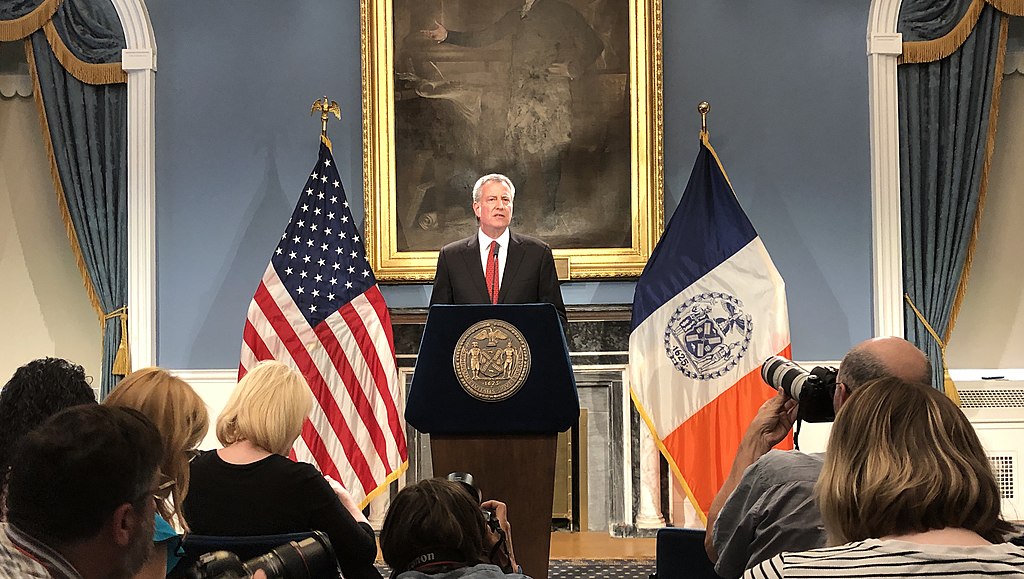by: Adam Roberts
With the coming of 2022, Mayor Bill de Blasio and a host of other city elected officials have left office. Over the last eight years, the former mayor, comptroller, borough presidents, and council members significantly impacted the practice of architecture in New York City. In order to better understand what policies we should advocate for in 2022, it is critical for architects to examine the policies that were enacted during the last eight years.
Sustainable Design
Perhaps no area of architecture saw more positive developments than sustainable design, particularly during the last few years. Since 2018, the city has enacted policies requiring that buildings post energy grades (LL33-2018), stay under emissions limits (LL97-2019), install bird-friendly glass (LL15-2020), and end the use of fossil fuels (LL154-2021). AIANY and its members were critical to the development and passage of these laws. Nevertheless, there is still much work to be done, particularly to ensure the successful enactment of these laws and the expansion of their scope.
Housing
Housing was another area that saw significant policy changes. De Blasio began his administration by seeking to build or preserve 200,000 affordable housing units in ten years, a goal that was reached in eight years. This affordable housing construction occurred disproportionately in marginalized communities, as many of these neighborhoods were rezoned for greater residential density. 2021, however, saw a major policy shift, with de Blasio and the City Council agreeing to rezone SoHo/NoHo. AIANY strongly supported this effort to increase the housing supply in two of the city’s wealthiest and most amenity-rich neighborhoods.
Transportation and Infrastructure
Lastly, transportation and infrastructure saw critical policy changes, but often these were insufficient to address the city’s needs. The MTA’s struggles were at the center of transportation policy during the last eight years, even though the agency is controlled by Albany. AIANY and other groups partnered to get congestion pricing approved by the State to fund the MTA. However, its enactment has been delayed due to a lack of political will, as even de Blasio was skeptical of congestion pricing until last year. Despite some policy shifts, his administration generally stalled controversial transit policies, such as the replacement of the BQE and installation of bus and bike lanes.
Looking back, architecture was at the heart of critical city policy debates over the last eight years. While there were numerous major successes, such as in the sustainability realm, there is still much work to be done by Mayor Adams and other new city elected officials. AIANY will continue to advocate and work with the city to ensure the successful enactment of these policies.








